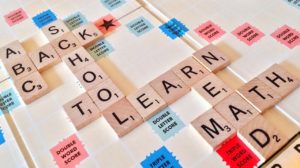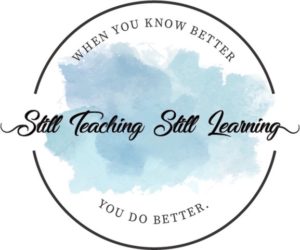
Do I really have to talk about expectations and rules and consequences on the first day of school?
According to Michael Linsin of Smart Classroom Management, the answer is yes.
Talking about behavior, rules, and consequences on the first day might seem harsh.
But think about how your students are feeling. They might be nervous on the first day. They might wonder how nice you are or how strict you will be. They might wonder how or if they will fit in with their classmates.
In Teaching Children to Care: Management in the Responsive Classroom, Ruth Sidney Charney says this:
“The word discipline is derived from the Latin root disciplina, meaning learning. It needs to be associated with positive acts and feats of learning, rather than negatively associated with punishing. Teaching discipline requires two fundamental elements: empathy and structure. Empathy helps us “know” the child, to perceive her needs, to hear what she is tryihng to say. Structure allows us to set guidelines and provide necessary limits. Effective, caring discipline requires both empathy and structure.”
Teaching your plan right away helps your students feel safe and know that you can be trusted to say what you mean and mean what you say. Being clear about what you expect is showing kindness.
It’s okay to start your first day with a couple of fun, get-acquainted activities. But after that, it’s time to begin teaching your classroom expectations and discipline plan.

Here’s how to do that.
1 – From the very first moment, set yourself and your students up for a successful year by explaining to students what behaviors you expect. The time it takes to explain, model, and review these routines is invested well because you will get that time back in having a calm, predictable, and orderly classroom.
Let your students know that respect, kindness, and learning are the ultimate goals and that rules and expectations in your classroom protect everyone’s right to learn and feel safe.
Students want to rise to high standards but must know what we expect. Even in upper elementary grades, when we might assume that they have heard these expectations every year, they still need (and deserve) to know what standards you will expect.
Rules give students the “lane lines” for the highway of your classroom, giving them a sense of security.

2 – You might start by talking about your hopes and goals for the school year and ask them to share some of their own. This could be done as a partnership, then whole group sharing/discussion, or you might have students write about their hopes and goals.
A great read-aloud to use for this discussion is Collaboration Station by Shannon Olsen.
In that context, you can then discuss classroom rules to help everyone’s hopes and goals become a reality.
As a class, develop three to five general rules that will guide how we treat each other and learn in our classroom.
Some teachers like to keep it simple by creating a one-rule classroom. Here’s an example of one rule: If what you are doing interferes with learning, hurts someone’s heart, or prevents you from being your best self, you should not be doing it.

3 – After creating the rules (or agreeing to one rule), make a chart or poster that displays the rule(s) and have everyone (teachers, instructional assistants, and students) sign the chart.
4 – Now, what should you do when your students break the rules? For one thing, expect it to happen. They will forget, they will lose self-control at times, and they might test limits.
Be ready to respond with logical consequences. Logical consequences help fix problems that result from breaking the rules. The consequence should be respectful of the child and fit the situation.

Here are three examples of logical consequences from The Responsive Classroom approach.
~You break it, you fix it. Students can clean up messes or do their best to repair something broken. They can write a note of apology if they have hurt feelings.
~Temporary loss of privilege helps students remember to use privileges responsibly the next time.
~”Take a break” helps students learn self-control by removing themselves (or being reminded to remove themselves) from a situation where they make poor choices, regain self-control, and rejoin the group.

5 – Some teachers like to role-play scenarios of students not following the rules and then model what they, as the teacher, will do as a consequence. You can make this funny (as you model the student part), but be quite serious as you model the teacher’s reaction.
To create these scenarios, think about some typical misbehaviors or challenges to the rules you have seen in the past.
In this article, Linsin suggests listing the five most disruptive and annoying misbehaviors you experienced last school year.

Model for your students how NOT to behave, then ask them to explain how and why this behavior is a problem for the class.
Explain what you will do in response to the behavior. When possible, make the consequences as logical and natural as possible.
Is a student talking to their tablemates and not getting work done? You will move them to a different seat where they will work alone.
Is the class talking and being rowdy as they travel through the hallways? You will have them practice hallway walking during the first two minutes of recess.
What if a student says something disrespectful to another student? Depending on the severity of what they said (some comments might require an administrator), you will have them take some time alone to calm down and reflect on what happened, and then they will write a letter of apology. In some cases, their parents/caregivers will be notified.

6 – Especially in the first days of school, continually remind your students that you will protect everyone’s right to learn and feel safe in your classroom.
7 – Now for the hard part – you must be consistent and persistent.
For example, if your policy is to give one reminder to lower voice levels during independent work time, and you have given that one reminder, you must follow through with your consequence of imposing silent independent
work time. If you don’t do what you said you would do, you are teaching your students that what you say doesn’t matter.

You will do lots of reinforcing during the first six weeks of school. When students don’t follow a procedure or expectation correctly, simply say, “That wasn’t our best. Let’s try that again.” Be brief and clear. (Remember: clear is kind.)
You don’t have to be mean, but you do need to mean what you say.
Here’s to a great year ahead!
All of my content is intended to save teachers time and energy. My goal is to make good teaching sustainable while having a life outside of teaching. Let me know how I can help YOU with this quick form!

Thank you for sharing information about blog commenting sites. I was searching for sites for blog commenting, then i found your website. it such very helpful for me.
Very helpful article! I learned something new today. Keep up the great work!
Very helpful article! I learned something new today. Thanks